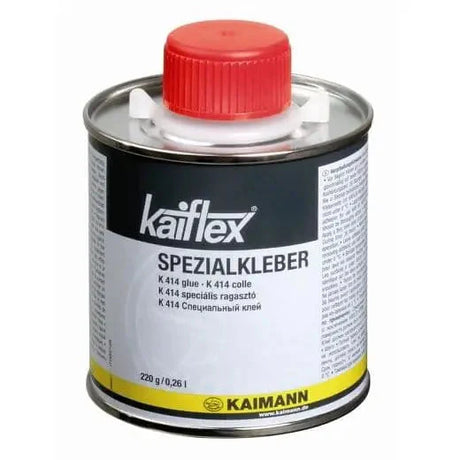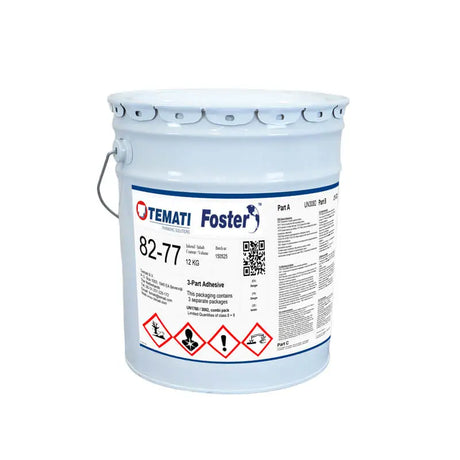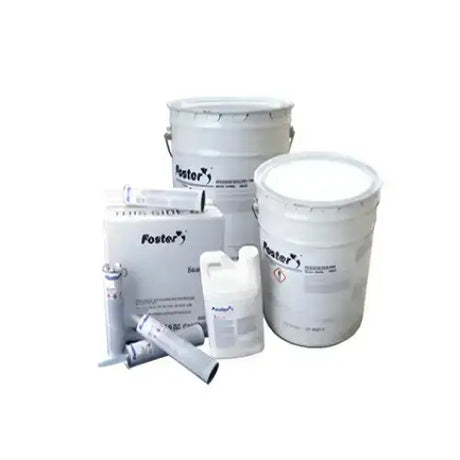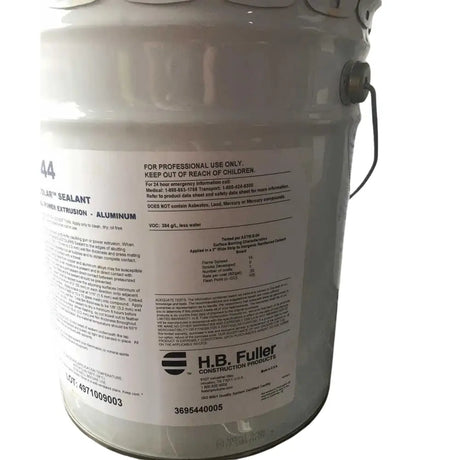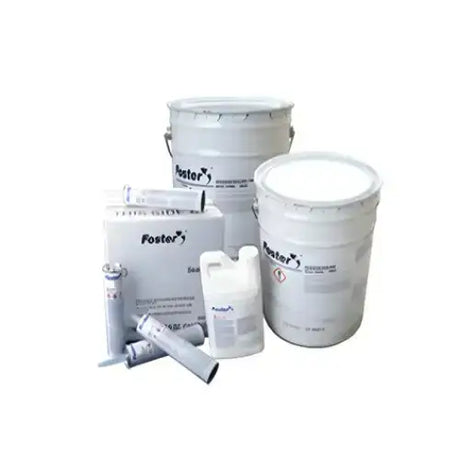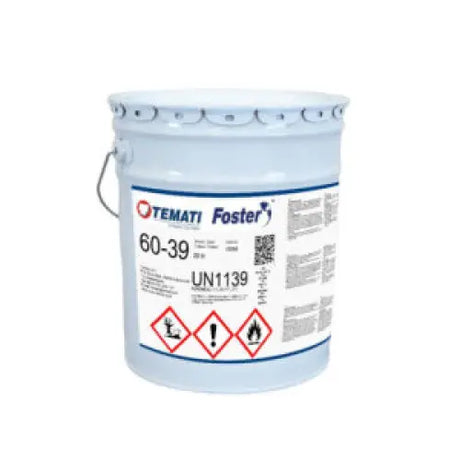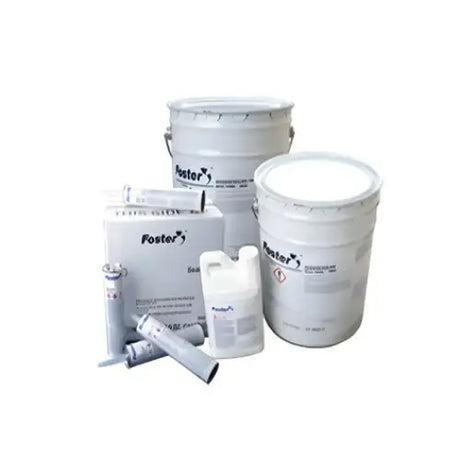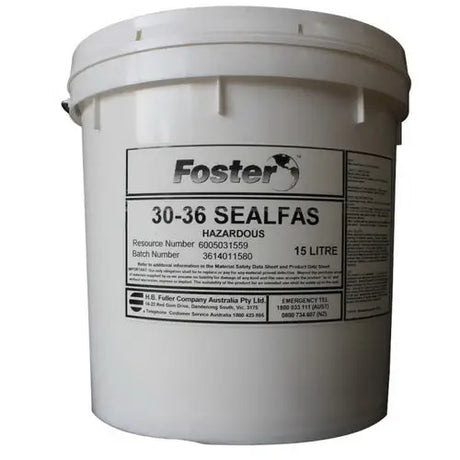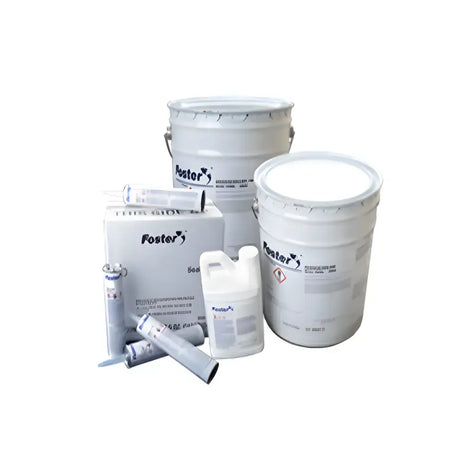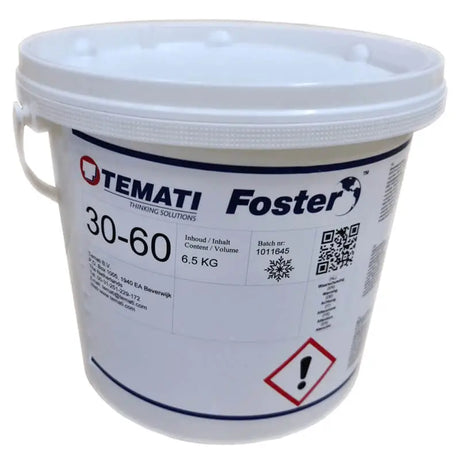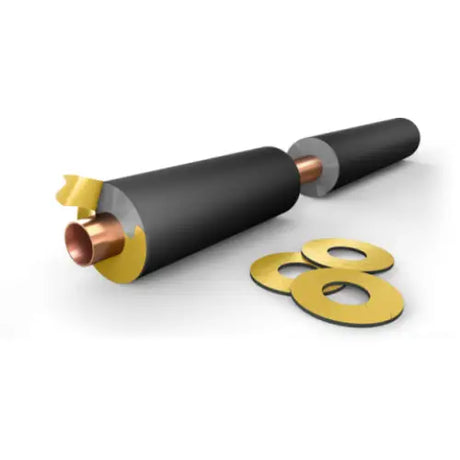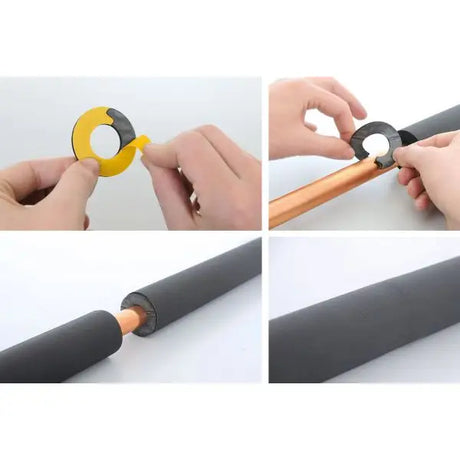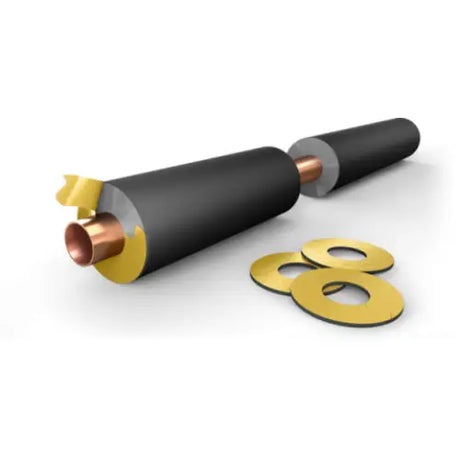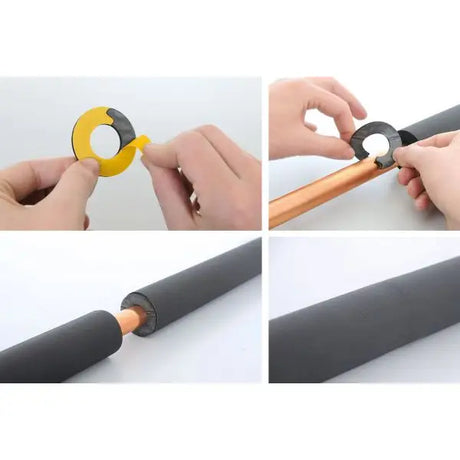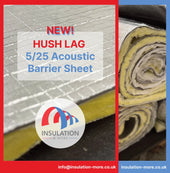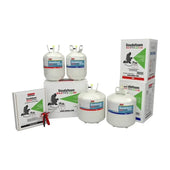Key Takeaway:
- Insulating HVAC pipes is crucial for saving energy and preventing heat gain, controlling condensation and corrosion, and ensuring personnel safety by preventing slip and fall hazards.
- The preferred insulation types specified by BSI (British Standards Institute) include closed-cell elastomeric pipe insulation, which offers benefits such as durability, flexibility, and ease of installation.
- Choosing the right insulation thickness is crucial and can be determined using insulation calculators, taking into consideration factors such as temperature, humidity, and pipe location.
Struggling to insulate HVAC pipes? Doing so ensures better energy use and prevents hot and cold temperatures. What's the best insulation? Here's a guide to help you choose. Save money on energy costs too!
Introduction
Insulating HVAC pipes is crucial for ensuring the efficient operation of HVAC systems. HVAC pipes transport cool, cold, warm, and hot fluids that are vital to maintaining comfortable and safe indoor environments. Moreover, improving HVAC systems' energy efficiency can help reduce energy costs and minimize the environmental impact. Therefore, selecting the right insulation for HVAC piping is essential.
There are various factors to consider when selecting insulation for HVAC piping. The insulation type should provide resistance to heat gain, prevent condensation and corrosion, protect personnel, and reduce energy loss. Also, proper insulation will prevent slip and fall hazards and protect pipes from water damage. Manufacturers' technical data sheets should be consulted to determine appropriate insulation thickness and ensure insulation compatibility with piping materials.
A wide range of insulation materials is available for HVAC pipes. These materials range from cellular glass, elastomeric foam rubber, polyisocyanurate, phenolic, and polyethylene foam, to phenolic foam, stone wool, mineral wool, glass wool , EPDM, and nitrile rubber. The choice of insulation material depends on various factors such as the ambient temperature and UV exposure.
When selecting insulation for HVAC pipes, it is crucial to prioritize the insulation's functionality over aesthetics. Conducting a condensation control calculation can help determine how much insulation is required to prevent condensation. Kaiflex EPDM Endless tubes are an excellent solution for insulating HVAC pipes, as they are easy to install, UV-resistant, and available in various insulation thicknesses. Copper, aluminum, and stainless steel are commonly used piping materials because of their durability and thermal conductivity.
Importance of HVAC Piping Insulation
When it comes to air conditioning systems, the importance of proper insulation for the HVAC pipes cannot be overstated. In fact, studies have shown that up to 30% of cooling and heating energy can be lost due to poor insulation of HVAC systems. This section will explore the various benefits of HVAC piping insulation, including:
- Energy savings
- Prevention of heat gain
- Condensation control and corrosion protection
- Personnel protection
- Prevention of slip/fall hazards
So, let's dive in and take a closer look!
Energy savings and prevention of heat gain
Efficient HVAC piping insulation is crucial for reducing energy consumption and preventing heat gain in HVAC systems. Proper insulation eliminates heat transfer, which enhances the efficiency of the system, reduces power consumption, prolongs the life span of equipment, thereby increasing savings.
Closed-cell elastomeric pipe insulation with a vapor retarder is an excellent option as it provides an efficient water vapor barrier that protects against corrosion under insulation (CUI) and other types of moisture damage while significantly reducing thermal losses on suction lines, liquid lines and discharge lines. Manufacturers’ technical data sheet specifies that closed-cell rubber insulation achieves 90% thermal efficiency at thicknesses between 25mm-40mm.
Additionally, poorly insulated systems produce conditioned air losing energy to the surroundings. Uninsulated suction and hydronic piping act as heat exchangers absorbing heat from their surrounding environments resulting in leaks due to fluctuations in refrigerant temperatures.
The UK’s Building Regulations Act` requires sufficient thermal performance for all buildings intended to save energy, reduce CO2 emissions and provide cost-effective solutions.
Don’t let your HVAC system suffer from poor insulation leading to unwanted expenses. Inspect heating and cooling systems regularly; replace worn-out or damaged materials before they cause frequent repairs or inefficient operations leading to high energy bills. Use proper AC piping insulation materials suitable for your climate zone, meet minimum R values mandated by building codes or manufacturer's technical data sheet.
Condensation control and corrosion protection
Proper insulation protects HVAC pipes from both condensation and corrosion. Condensation control is a significant factor as it prevents water accumulation which can cause damage to the system, leading to additional maintenance costs. Insulation also helps reduce corrosion by minimizing exposure to moisture and allowing for optimal use of refrigerants. Furthermore, proper insulation adheres to manufacturers' technical data sheet guidelines for long-lasting protection against corrosion and temperature fluctuations.
In addition, the best insulation for HVAC pipes is dependent on various factors such as environmental conditions and budget constraints. For instance, fiberglass insulation is an affordable option that provides adequate protection against moisture, but it may lose its properties over time. In contrast, closed-cell foam insulation offers excellent resistance to moisture penetration and can withstand high temperatures without deteriorating or losing its insulating properties.
It's important to note that different types of insulation may be required based on pipe diameters and location in the system. Therefore, careful consideration of these factors is crucial in selecting the best type of insulation for your HVAC system.
Pro Tip: Consult with a professional contractor to determine the most suitable type of insulation for your specific HVAC piping requirements.
Personnel protection and prevention of slip/fall hazards
Ensuring personnel safety and preventing slip/fall hazards are crucial factors when it comes to AC piping insulation. Proper insulation not only protects the HVAC system but also the individuals working near the pipes.
Using high-quality insulating materials for pipes can protect against damage and reduce the risk of accidents caused by hot or cold pipes. Similarly, un-insulated HVAC pipes can cause condensation which can result in a slippery surface, increasing the risk of fall hazards.
Proper installation of insulation such as fiberglass, foam rubber or closed-cell elastomeric foam can prevent these risks while also improving energy efficiency by reducing heat loss or gain.
Manufacturers' technical data sheets can provide valuable information on appropriate materials and procedures for specific applications. Neglecting the importance of AC piping insulation can lead to costly expenses, personal injury claims and downtime for repairs.
A real incident occurred on a construction site where un-insulated HVAC pipes caused condensation that resulted in an accident, leading to a serious injury claim. It could have been prevented if proper insulation was used. Hence, it is important to emphasize the significance of personnel protection and prevention of slip/fall hazards with adequate AC piping insulation.
Insulating the Suction Line
Having a bit of experience as an HVAC technician, I know the importance of properly insulating HVAC pipes. In this segment, we will discuss the importance of insulating the suction line and the different factors that need to be considered.
Firstly, we delve into the need for insulation to prevent condensation and energy loss. Then, we move on to the importance of insulation in protecting the system from corrosion under insulation (CUI). Finally, we will examine how insulation can prevent water damage below and the importance of expansion in the insulation system.
According to the UK Government, proper insulation can save up to 20% on energy costs, making it critical to get it right.
Need for insulation to prevent condensation and energy loss
Proper insulation of the suction line is essential to prevent energy loss and condensation. Inadequate insulation leads to rust, corrosion, and even mold buildup in extreme cases. This not only reduces the overall efficiency of the HVAC system but also poses health risks for the occupants. Therefore, it is crucial to choose the right insulation material and design.
The selection of insulation materials largely depends on several factors such as operating conditions, size of pipes, and cost. Fiberglass, polyethylene foam, elastomeric foam, and mineral wool are commonly used materials for insulating HVAC pipes. To ensure adequate insulation thickness, consider consulting manufacturers' technical data sheets.
Remember that the right type and thickness of pipe insulation can help reduce energy costs by up to 90%! Also keep in mind that some jurisdictions have building codes that mandate a specific R-value or level of thermal resistance for piping systems. Don't miss out on the benefits of proper insulation - make sure to consult with experts before starting your HVAC project.
Protection from corrosion under insulation (CUI)
When insulating HVAC pipes, it is important to consider protection from corrosion under insulation (CUI). Without proper insulation, moisture can seep through the material and result in corrosion, leading to equipment failure and potential hazards. To prevent CUI, selecting the appropriate insulation material according to manufacturers' technical data sheet is essential.
Fiberglass and cellular glass insulation are common choices for pipe insulation due to their ability to resist moisture penetration and prevent CUI. However, coating or sealing the insulation system with a vapor retarder further enhances its performance against moisture intrusion.
It is also crucial to inspect the piping regularly and repair any damage that may compromise the integrity of the insulation system. Uneven layers of insulation can also lead to potential breaches in the system, leading to moisture entry.
Overall, selecting suitable insulating materials for HVAC pipes and maintaining them appropriately ensures long-lasting protection from CUI. Ensure you follow the manufacturer's guidance and recommendations on installing your choice of insulation for the best results.
Prevention of water damage below
To safeguard against potential water damage, it is crucial to insulate HVAC pipes. Preventive measures can prevent moisture build-up in the atmosphere from accumulating on cold pipes and dripping onto surfaces below. Proper insulation of suction lines can reduce condensation and protect building structures from potential water damage.
The best insulation for HVAC pipes varies based on the needs of individual systems and manufacturers' technical data sheets. However, closed-cell foam insulation with a high R-value is generally considered the most effective choice for suction lines. It has an excellent ability to maintain temperature control and suppresses water vapor ingress into the pipe.
In addition to taking preventive steps to mitigate water damage, inspecting the system regularly can help identify leaks or inefficient parts that may require replacement. Finally, for optimal life expectancy of an HVAC system, planned maintenance agreements are worth consideration.
According to a survey conducted by FacilitiesNet in 2020, '34% organizations reported an increase in HVAC repairs due to lack of maintenance.'
Insulating the Liquid Line
As someone who has worked as an insulation contractor for almost 2 decades, I can attest to the importance of proper insulation for HVAC pipes. In this particular section, we’ll take a closer look at the insulation of the liquid line.
One of the key reasons for insulating the liquid line is to prevent condensation and corrosion. But that’s not all there is to it. We’ll also examine the need for insulation in spaces where the ambient temperature exceeds the liquid line temperature. Additionally, we’ll touch on personnel protection considerations and explain what that means for those who work around insulated HVAC systems.
Need for insulation in spaces where ambient temperature exceeds liquid line temperature
The piping in HVAC systems carries refrigerants and other liquids that require specific temperatures for efficient functioning. When the ambient temperature of a space exceeds the liquid line temperature, heat transfer occurs between the pipe and the surroundings, resulting in energy loss. Therefore, there is a need for insulation in such spaces to maintain optimal pipe temperatures and prevent thermal discomfort.
Insulation acts as a barrier against heat transfer and helps in maintaining consistent temperatures within pipes. It also reduces energy consumption and noise levels generated by system operations. The choice of insulation material must be made based on various factors such as operating temperature range, compatibility with the fluid being transported, and durability.
Additionally, it is crucial to follow manufacturers' technical data sheets while selecting or installing insulation materials, as they provide detailed information on product specifications, installation techniques, and maintenance procedures.
Suggestions for choosing suitable insulation materials include:
- Considering the thickness required to meet set R-values (thermal resistance),
- using vapor barriers to prevent condensation build-up,
- avoiding compressed insulation that affects its insulation capacity, and
- leveling any bumps or uneven surfaces before installation.
These suggestions help ensure efficient system operations while saving energy and reducing costs.
Personnel protection considerations
The safety of personnel is of utmost importance when insulating HVAC pipes. Personnel protection materials should be considered based on fire safety and toxicity ratings. Common insulation materials such as fiberglass, foam and elastomeric rubbers are used in the industry with manufacturers technical data sheet being utilized to ensure compliance. Asbestos or lead-containing insulation materials must not be used for health reasons.
When working with foam insulation, care should be taken to avoid contact with the skin, eyes, or respiratory system during installation. Proper personal protective equipment such as gloves, goggles and a respirator should be worn according to regulations.
It is also recommended that during installation, precautions be taken to prevent any heat source from coming into contact with the insulation material to avoid fire hazards. Moreover, the thickness of insulation installed is an important factor in ensuring effective pipe protection against environmental factors.
Don't risk personnel safety by not prioritizing proper insulation for HVAC pipes. By using the right materials and following regulations, you can ensure a safe workplace environment for your employees.
Insulation Material Types
Insulating HVAC pipes is an important consideration for any building to achieve optimum energy efficiency. There are several insulation materials that can be used for this purpose, each with its own unique benefits. In this section, we'll take a closer look at the different insulation material types and how they compare to each other.
First up are the preferred insulation types specified by BSI. Then, we'll discuss the advantages of using closed-cell elastomeric pipe insulation. Lastly, we'll touch upon why ensuring proper insulation thickness is crucial to control condensation. So, let's dive into the world of HVAC pipe insulation and explore the different materials available.
Preferred insulation types specified by BSI
When it comes to selecting the most suitable insulation for HVAC pipes, several types come to mind. However, most relevant source in the UK is BSI, which recommends certain materials based on their effectiveness, durability, and thermal resistance. Therefore, referring to 'Insulation material types-What is the best insulation for HVAC pipes?', we have compiled a list of preferred insulation types specified by BSI.
For better understanding, we present a table outlining the BSI's recommended insulation types along with their key features in terms of cost, durability, fire safety ratings, and thermal conductivity.
| Insulation Types | Cost per unit area | Durability (Years) | Fire Safety Ratings | Thermal Conductivity (W/mK) |
|---|---|---|---|---|
| Fiberglass | Low | 25-30 | Class A | 0.031 |
| Mineral wool | Moderate-High | 80-100 | Class A | 0.040 |
| Cellular glass | Very High | >20 | Class A | 0.031 |
| Polyurethane foam | High | Up to 25 | Class I | <0.023 |
| Phenolic foam | High | Up to 30 | Class B/1r | <0.027 |
While all the above insulation types offer different benefits and drawbacks concerning cost and performance standards; Fiberglass and Mineral wool are more common choices among designers due to lower costs while meeting BS EN 13053:2019 specifications for Ventilation for buildings. Air handling units. Rating and performance for units, components and sections.
It may be intriguing that many times choosing an appropriate sized pipeline achieves significant savings in dollars than using specially treated high-performance materials.
For an illustration of performance, a manufacturer worked closely with BSI for using two-inch thick, closed-cell phenolic foam insulation on their heat transfer equipment. The result was increased efficiency by nearly 5%, resulting in substantial annual savings to the end consumer.
Benefits of closed-cell elastomeric pipe insulation
Closed-cell elastomeric pipe insulation is an excellent insulation material for HVAC pipes with numerous benefits. It is a type of insulation that provides exceptional long-term thermal efficiency and is ideal for applications where moisture control is necessary.
- Energy-efficient: Closed-cell elastomeric pipe insulation reduces energy consumption by preventing heat loss or gain in pipes.
- Durable: It has excellent resistance to moisture, UV radiation, and chemicals, making it durable and long-lasting.
- Easy installation: The lightweight material is easy to handle and cut, which makes installation smooth and quick.
- No CFCs: Closed-cell elastomeric pipe insulation does not contain chlorofluorocarbons (CFCs), which harm the environment.
This type of insulation material also offers superior acoustic dampening properties that can reduce noise levels from pipes in HVAC systems. Closed-cell elastomeric pipe insulation's smooth surface eliminates the need for additional protective coatings, ensuring a clean installation process.
Pro Tip: Always ensure that you choose the correct thickness when selecting closed-cell elastomeric pipe insulation to suit your specific HVAC needs. This can help maximize its benefits while saving on energy costs.
Importance of proper insulation thickness to control condensation
Insulating HVAC pipes properly is crucial to prevent condensation, which can lead to significant damage and reduced system efficiency. Insulation thickness must be carefully selected as it plays a vital role in controlling this issue. Not only does proper insulation minimize thermal loss/gain, but it also reduces noise pollution.
Furthermore, inadequate insulation thickness can cause mold growth, corrosion, and energy wastage by allowing heat transfer between the system and surrounding environment. Ideally, the thickness of the insulation should balance economic considerations with the intended use of the system.
Insulation material type has an essential relationship with these factors too. While fiberglass is economical, it provides low resistance to moisture while closed-cell foam insulations are more effective in preventing condensation by providing a vapor barrier; they tend to be costlier.
According to Scientific American, poorly insulated pipes can account for up to 40% of total energy waste in an average household and pose serious health risks.
Choosing the Right Insulation Thickness
When it comes to insulating HVAC pipes, choosing the right insulation thickness is critical. In this part of the article, we'll break down how to determine the correct insulation thickness by using insulation calculators, which can take into account factors such as pipe size, temperatures, and environment. It’s essential to choose the right thickness as this can directly affect the efficiency of your HVAC system and your energy bill. We'll also look at other factors that should influence your thickness decision, including safety concerns and regulations, to ensure you choose the best insulation for your HVAC pipes.
Use of insulation calculators to determine correct thickness
Insulation calculators are useful tools that can help determine the right insulation thickness for HVAC pipes. These calculators take into account factors such as pipe size, material, and temperature to provide a recommended insulation thickness.
Here's a 4-step guide on how to use an insulation calculator to determine the correct insulation thickness:
- Enter the required data - You will need to input information about your HVAC pipes, such as their diameter, temperature range, and environmental factors.
- Select the insulation type - There are various types of insulation materials available and each offers different benefits. Choose the one that would be suitable for your needs.
- Choose an acceptable heat loss - The calculator will ask you about how much heat loss you're willing to accept from your system. You can then adjust the settings accordingly.
- View results - After entering all necessary information, the calculator will suggest different insulation thicknesses based on your inputs.
It's important to note that while insulating HVAC pipes is critical, it's also essential to use the right amount of insulation for efficiency. Thick insulation may be beneficial in some cases but can lead to unnecessary expense if not needed.
A pro tip is to remember that selecting the correct amount of insulation doesn't only help maintain temperature control but also delivers cost savings through reducing energy costs by minimizing heat losses.
Factors to consider when choosing insulation thickness
Insulation thickness is a crucial aspect of choosing the appropriate insulation for HVAC pipes. To ensure that you select the perfect insulation thickness, several factors must be considered.
- The required R-value
- The environment in which the insulation will be placed
- The size and type of the HVAC pipes that require insulation
- Airflow velocity and the temperature gradient
- Life cycle cost analysis
When deciding on the best insulation thickness for your HVAC pipes, consider the R-value first. Factors such as weather conditions, location of the piping system, and energy usage necessitate an appropriate R-value to stay efficient. Next, you should look at the environment in which you will place it. Moisture can damage some forms of insulation; although other styles may not be ideal for environments with high temperatures.
The third factor in selecting insulation thickness is to consider pipe size and sort. The total surface area covered causes extra stress, requiring more substantial or thicker materials to keep up. Next, airflow velocity plays an essential role as high-velocity air can cause stress on thinner material leading to wear and tear. Finally, when considering long-term costs such as operating costs and regular maintenance requirements life-cycle cost assessment must lead decision-making processes.
Additionally, bear in mind that no two piping systems are alike; therefore, analyzing every project independently is critical to ensure maximum performance efficiency.
According to this report from the BPIE, over 97% of buildings in Europe need some insulation upgrades to achieve an A rating and of that 75% of all homes lack sufficient insulation, particularly in their HVAC systems.
Kaimanns Kaiflex brand of EPDM Closed-Cell Elastomeric HVAC Piping Insulation
As an HVAC contractor, I know that one of the important aspects of pipe installation and maintenance is choosing the right insulation. That's why I wanted to take a closer look at the Kaiflex brand of EPDM closed-cell elastomeric AC piping insulation from Kaimann. Kaimann is a leading manufacturer (now part of the Saint-Gobain group) that is more readily available in the UK, in many cases cheaper than Armacell while providing equivalent or superior performance.
In this section, we'll explore some of the features and benefits of this insulation, including its flexibility and ease of installation. We'll also discuss which applications and operating temperatures it is best suited for. With this information, you'll be able to decide if the Kaiflex brand is the right choice for your next project.
Features and benefits
Kaiflex provides excellent insulation options for HVAC pipes, keeping your systems secure and energy-efficient. Here are some advantages of using Kaiflex's EPDM Closed-Cell Elastomeric AC Piping Insulation:
- Energy-Saving: The insulation reduces heat gains and losses and restricts condensation, keeping thermal conductivity low leading to reduced energy consumption.
- Flexible: Its flexibility simplifies installation and eliminates the need for joints, avoiding leaks while increasing longevity.
- User-Friendly: It is fiber-free, dust-free, and formaldehyde-free making it a safe choice for users with allergies or sensitivities to such particles.
Additionally, the pipe insulation protects against environmental pollutants like moisture damage and corrosion due to weather conditions.
Pro Tip - Regularly inspect pipes to ensure there are no damages causing the insulation to wear out faster than expected.
Suitable applications and operating temperatures
EPDM Closed-Cell Elastomeric AC Piping Insulation offers a versatile range of applications for different HVAC systems with varying temperatures. Here's a breakdown of the suitable applications and operating temperatures:
| Applications | Operating Temperatures (°F) |
| Air conditioning refrigerant lines | -70 to 220 |
| Chilled water supply and return lines | -70 to 220 |
| Condenser water supply and return lines | -70 to 220 |
| Dual temperature piping systems | -70 to 220 (200 max. for hot) |
Kaiflex by Kaimann brand of EPDM Closed-Cell Elastomeric AC Piping Insulation stands out due to its exceptional protection against condensation, thermal conductivity, and flexibility. It requires no additional vapor barriers or coatings, making it highly cost-efficient. Additionally, the closed-cell structure resists water vapor absorption, preventing mold growth and ensuring long-lasting durability.
Conclusion
Insulation for HVAC pipes - The Best Choices for You
When it comes to selecting the appropriate insulation for HVAC pipes, various factors must be considered. The requirements of the pipe's interior, such as its size and the temperature range it operates within, are essential to consider. Additionally, the environment where the pipes are located plays a critical role in selecting the right insulation.
One of the most commonly used types of insulation is fiberglass. It is inexpensive, easy to install, and has excellent thermal insulation properties, making it a popular choice for HVAC pipes. Another insulation type is closed-cell foam, known for its water-resistant properties. It is durable and adaptable, providing excellent insulation to the HVAC pipes both indoors and outdoors.
If you are looking for something more eco-friendly, then recycled denim insulation could be an ideal option. Not only is it sustainable, but it also provides great insulation, soundproofing, and fire-safe qualities. Moreover, it is pest and mold-resistant, making it a perfect choice for long-lasting durability.
Investing in high-quality insulation for your HVAC pipes is critical to ensure that your system runs efficiently and smoothly, leading to long-term cost savings. Consult with a professional to help you choose the best insulation option for your HVAC pipes. Don't fall behind on insulation and risk the consequences of running your HVAC system without thermal protection.
Take the first step in securing the safety and optimizing the efficiency of your HVAC pipes today by selecting the best insulation, which provides longevity and peace of mind.
Five Facts About the Best Insulation for HVAC Pipes:
- ✅ The most commonly used insulation for HVAC pipes is fiberglass insulation. (Source: HVAC School)
- ✅ Other types of insulation include mineral wool, foam insulation, and elastomeric foam. (Source: Insulation Institute)
- ✅ The R-value is a measure of insulation's effectiveness, and higher R-values indicate better insulation properties. (Source: Energy.gov)
- ✅ Proper insulation of HVAC pipes can help reduce energy consumption and save on utility bills. (Source: Energy Star)
- ✅ In addition to reducing energy consumption, insulation can also help prevent condensation formation and reduce noise from HVAC systems. (Source: Insulation Outlook)
FAQs about What Is The Best Insulation For Hvac Pipes?
What is the best insulation for HVAC pipes?
The best insulation for HVAC pipes is typically closed-cell foam insulation. This type of insulation provides an airtight seal that helps prevent moisture accumulation, which can lead to corrosion and energy loss.
How does closed-cell foam insulation work?
Closed-cell foam insulation works by trapping pockets of air within the foam cells. This air acts as a barrier to heat transfer, helping to keep the temperature of the pipe at a more consistent level. Additionally, the foam provides an extra layer of protection against moisture infiltration and corrosion.
Can I use fiberglass insulation for HVAC pipes?
Fiberglass insulation can be used for HVAC pipes, but it is not recommended. Fiberglass insulation can absorb moisture, which can lead to corrosion and energy loss. Additionally, fiberglass insulation tends to compress over time, reducing its insulating properties.
What are the advantages of using closed-cell foam insulation?
Closed-cell foam insulation provides several advantages for HVAC pipes. It provides an airtight seal that helps prevent moisture accumulation, which can lead to corrosion and energy loss. It is also resistant to mold and mildew growth, and it has excellent thermal insulation properties.
How do I install closed-cell foam insulation on my HVAC pipes?
You can install closed-cell foam insulation on your HVAC pipes by following these steps:
- Clean the pipes thoroughly
- Measure the diameter of the pipes
- Cut the foam insulation to the appropriate length
- Wrap the foam insulation around the pipe, making sure to seal any gaps or seams
- Secure the insulation with tape or adhesive
Is closed-cell foam insulation environmentally friendly?
While closed-cell foam insulation is not biodegradable, it is considered environmentally friendly because it is energy-efficient and can help reduce greenhouse gas emissions. Additionally, some closed-cell foam insulations are formulated with bio-based materials, which can further reduce their environmental impact.

